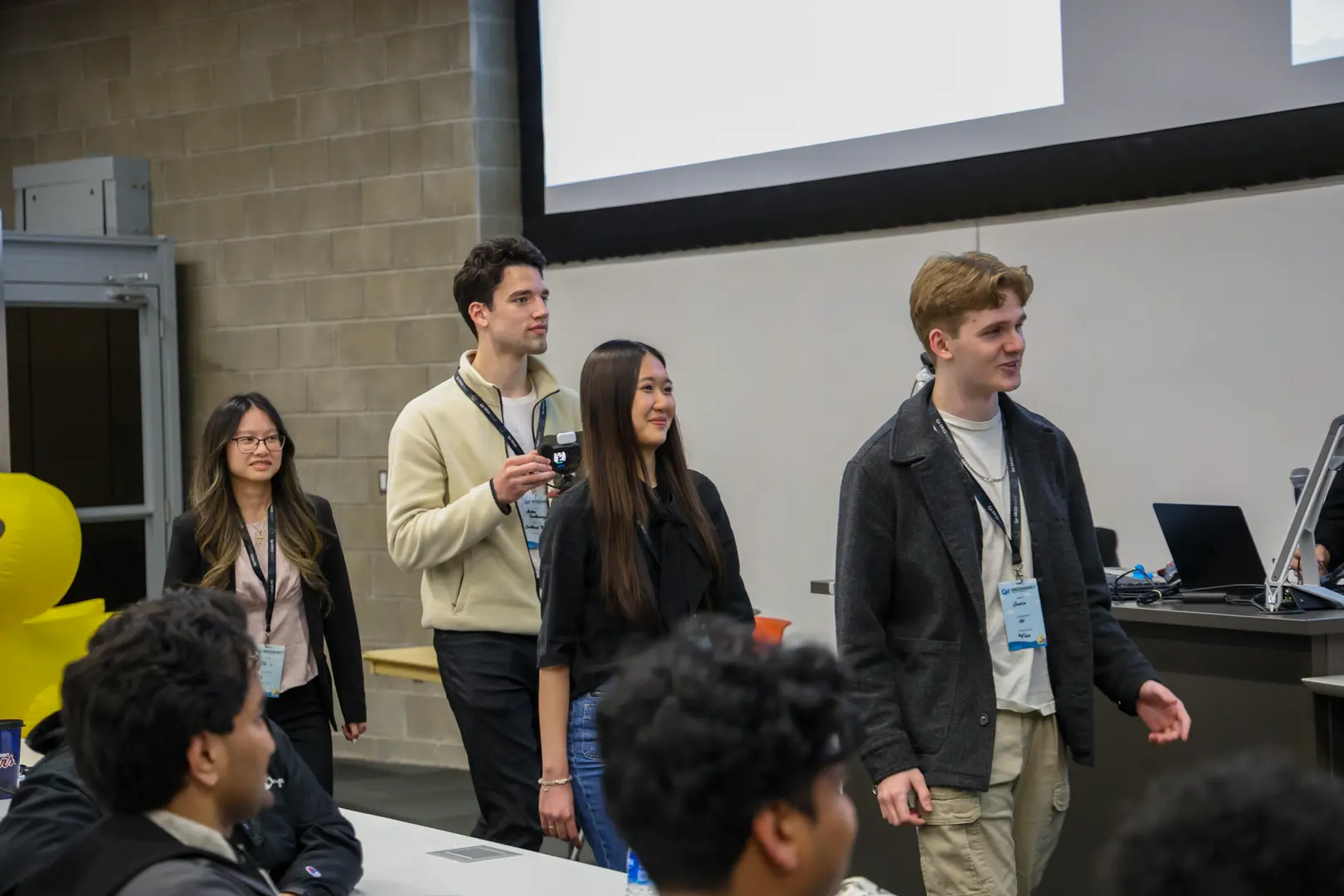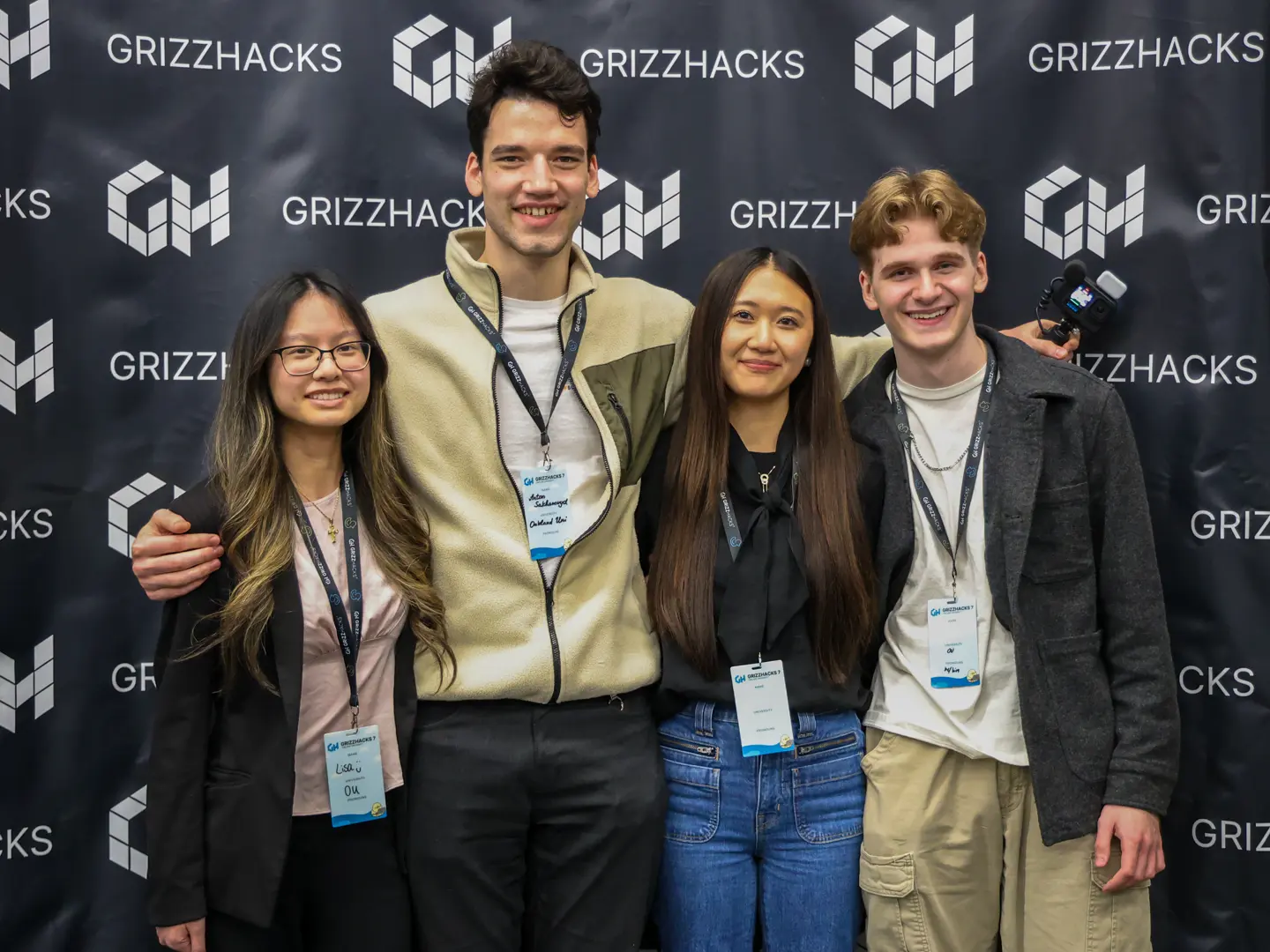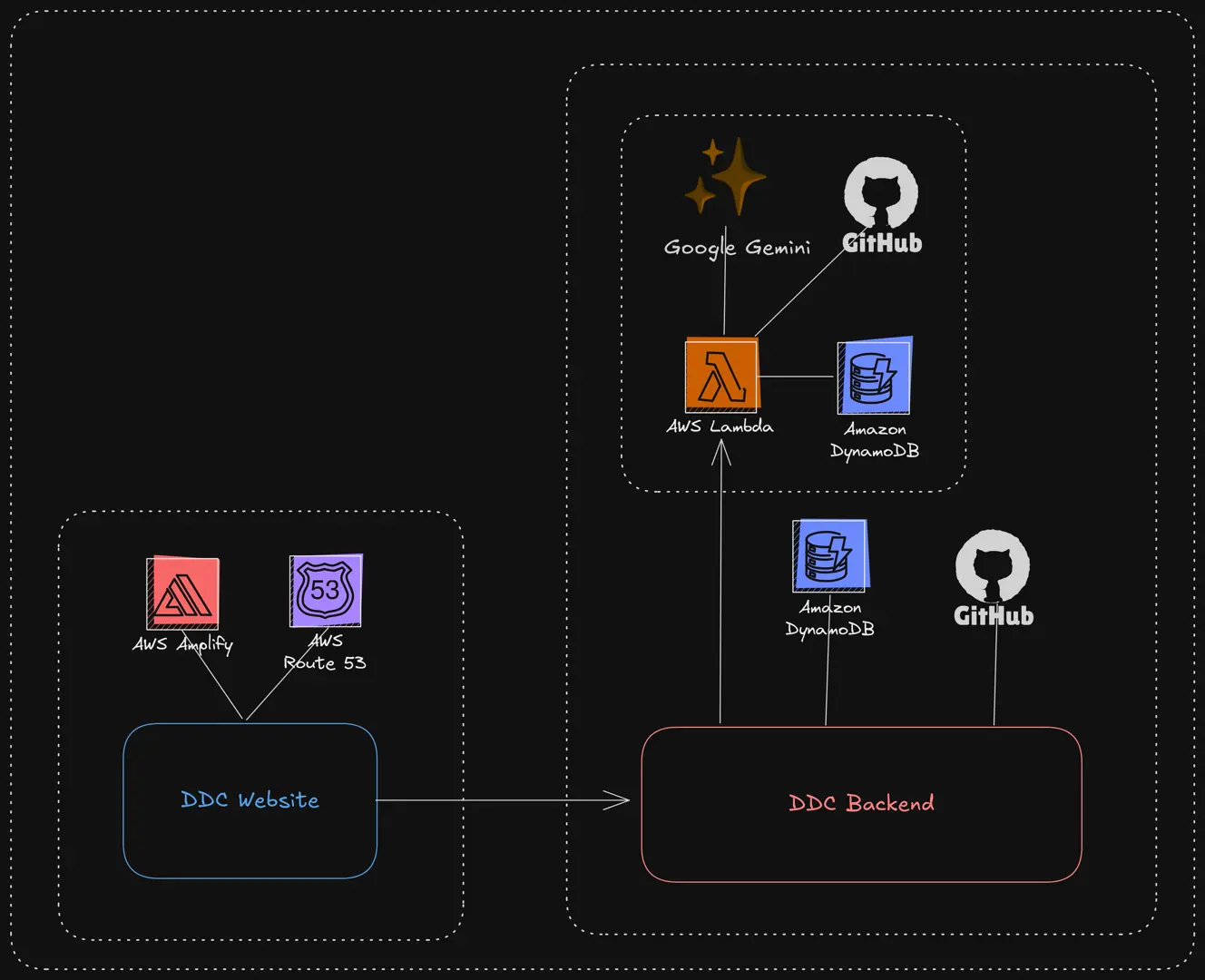GrizzHacks 7
Written 3/24/2025
Links
Context
This past weekend, March 22nd and 23rd 2025, I had the pleasure of attending the seventh rendition of GrizzHacks, Oakland University's hackathon! It's is a 24-hour coding competition where students come together to create projects, learn new technologies, and network with other students and professionals. This was my first hackathon, and I was thrilled to be participating with some of my favorite people.
My team consisted of:
- Myself (Gavin D'Hondt), LinkedIn
- BoiGia Phui (my lovely
wifegirlfriend), LinkedIn - Anton Sakhanovych (my handsome
husbandboyfriendfriend), LinkedIn - Lisa Nguyen (my amazing friend), LinkedIn
And together, we built DuckDuckCode, an AI-powered web service that raises pull requests directly into your GitHub repositories. Users speak to our AI assistant to fix bugs or implement features, and it will (blazingly fast) write the code and create the pull request for them.
It was a great experience. I had a ton of fun, learned a lot, met some awesome new people, and got to spend 24 hours with my closest friends. We also won the best beginner hack award! Since it was my, Anton's, and Lisa's first hackathon, we were eligible for the award. And for our first hackathon, in just 24 hours, I think we did an amazing job, and I'm extremely proud of all of my group members for their hard work.
The GrizzHacks team is also incredible. I got to meet Halee Tisler and Joe Malatesta, two very cool people who are BoiGia's good friends and the primary organizers of recent GrizzHacks. I also got to see Kaeden Bryer who is part of the GrizzHacks team and is one of my favorite people even though we aren't that close haha.
Honestly, I used to dislike the idea of hackathons, fearing bias and a lack of proper sanitization, but the whole GrizzHacks team has done an amazing job of making the event inclusive and welcoming to everyone. They also went above and beyond with the events, workshops, networking opportunities, food, and prizes. I'm really happy I went and this is another reminder to myself that what I think I know is the opposite of the truth most of the time 😅
Pictures
Here are some pictures of us from the event, even though my team members are mogging me hard in each one 😔


Technical Details
If you're looking for the juicy technical details, look no further.
This project was quite ambitious and it's kind of a miracle we got it working in 24 hours. It's a full-stack application, meaning there's a frontend website and a backend REST API. But we also have most of our business logic in an AWS Lambda running asynchronously, and all of our data is stored in AWS DynamoDB.
The high-level architecture looks like this:

And our tech stack was:
- Frontend:
- Next.js (React)
- TypeScript
- Tailwind CSS
- shadcn/ui
- AWS Amplify + Route 53 for hosting
- Backend:
- Next.js API routes (Node.js)
- TypeScript
- AWS Lambda (Node.js)
- AWS DynamoDB
- Octokit
- GitHub API
- Google Gemini API
Frontend
We had three pages:
- Home
- Login
- Chat
We prioritized a clean and simple design, but near the end we were able to spice it up with some really cute assets! I think it turned out looking quite nice and polished... except for the chat page (which is the one I did 😎)
We used a few tools to facilitate quicker development and reaching consensus:
- Figma for design mockups
- Canva for most of our logo and most of our assets
- Realtime Colors for color scheme selection
- v0.dev for rapid AI-assisted mockups (with code you can actually import into your project)
Backend
We created the following API routes to satisfy all of our use cases:
GET /api/repos: Gets all GitHub repositories for a userGET /api/github/callback: GitHub OAuth callback - stores a user and access token in DynamoDBPOST /api/repository: Records a repository (project) item in DynamoDBGET /api/repository/:repo_name: Gets a repository item from DynamoDBDELETE /api/repository/:repo_name: Deletes a repository item from DynamoDBPOST /api/repository/:repo_name/chat: Adds a chat message to a repository item in DynamoDB. This is also what kicks of the Lambda execution
We used Octokit, GitHub's Node.js API client, to interact with the GitHub API in a type-safe manner, They made it quite easy to use, and we were able to adapt to the SDK pretty quickly.
The AWS SDK for Node.js is also quite nice, but PRO TIP: if a @aws-sdk/lib-<service> package is available, use it in combination with the @aws-sdk/client-<service> package.
The @aws-sdk/lib-dynamodb package is WAY nicer to use because you don't have to convert your data to and from the DynamoDB format.
Another tip: if you also deploy your app to AWS Amplify, you can easily create AWS clients without needing to configure credentials: AWS handles it for you already. Though, you DO still need to add the necessary IAM permissions to your Amplify app's role in the AWS console.
Lambda
The Lamdba is the real meat and potatoes of our project.
We used a single lambda function that:
- Authenticates with GitHub using the user's access token through Octokit
- Downloads the user's repository as a tarball and extracts it to a temporary directory
- Reads all the files recursively
- Tells Gemini all the files in the project and asks which files it would like to inspect the contents of
- Prompts Gemini again with those file contents asks for code suggestions
- Replaces the local file contents with the suggested code
- Creates a pull request with the changes
- Records the pull request in that project's chats in DynamoDB
You might be wondering: why didn't you just git commit -a -m "..." && git push in the Lambda?
Lambda does not contain a Git binary D: and we felt it wasn't worth the time to install it in the Lambda or ship it with a layer.
The GitHub API method is surprisingly quite a bit more difficult and is very inergonomic, but DeepSeek R1 did a great job of abstracting it away for the most part!
DynamoDB
It would've been way easier to just use a relational database like PostgreSQL, but we wanted to try something new. Also, it was kind of scary fighting the connection pool when using asynchronous invocation with Lambda 😟
We designed this schema which is kind of goofy but it works!
| pk | user_id | avatar_url | token | repo_id | name | branch | chats |
|---|---|---|---|---|---|---|---|
| USER#<user_id> | <user_id> | <avatar_url> | |||||
| TOKEN#<token> | <user_id> | <token> | |||||
| REPO#<name> | <repo_id> | <name> | <branch> | <chats> |
And after 111 commits across 3 repos (website, lambda, and AWS CDK) as well as 0 hours of sleep, we accomplished our goal 😎